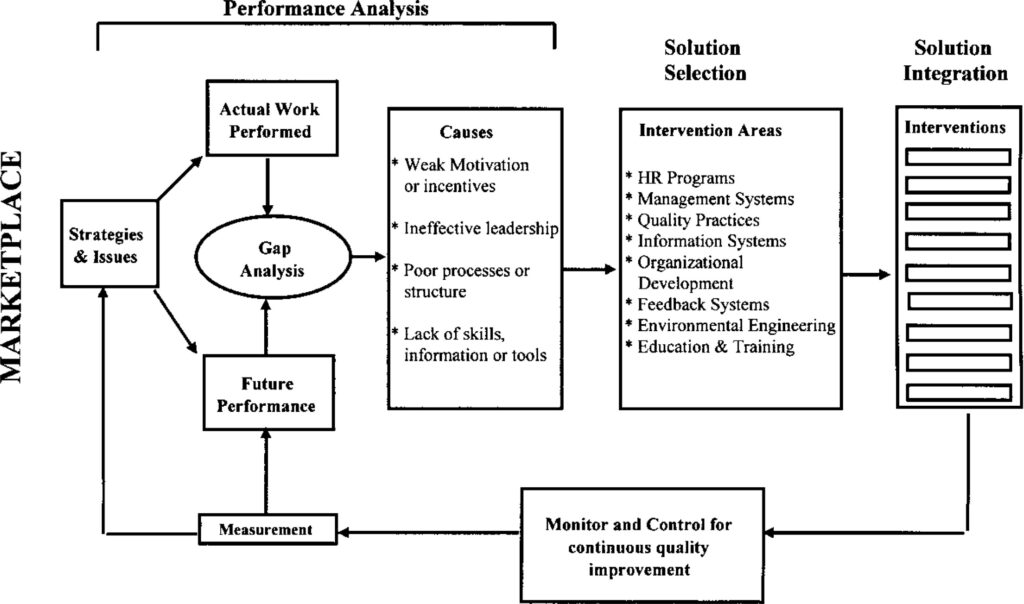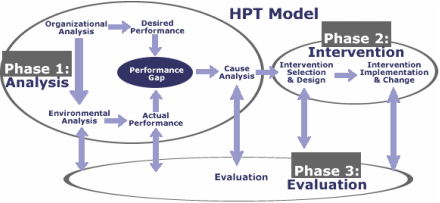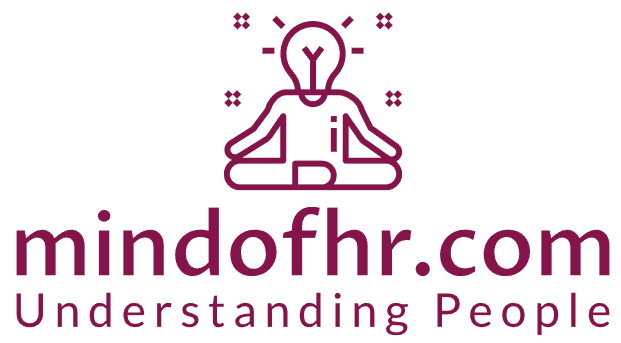In the fast-paced and competitive landscape of today’s business world, organizations are constantly seeking ways to optimize human performance to achieve their strategic objectives. At the forefront of this endeavor is the Human Performance Technology (HPT) model, a systematic framework designed to enhance individual and organizational performance through meticulous analysis and targeted interventions. In this article, we delve into the essential components of the HPT model and explore real-life examples of companies that have successfully harnessed its power.
Understanding the HPT Model

The HPT model, developed by Thomas F. Gilbert, provides a structured and evidence-based approach to improving human performance within organizations. It comprises several key components that form a coherent and systematic process:
1. Performance Analysis:
Performance analysis serves as the cornerstone of the HPT model. It involves a thorough examination of an organization’s current state of performance, identifying gaps and areas for improvement. For instance, a company experiencing declining sales might conduct a performance analysis to pinpoint the root causes behind this trend, whether they are related to skills, motivation, or external factors.
2. Cause Analysis:
Once performance gaps are identified, cause analysis digs deeper into the underlying factors contributing to the performance issues. This phase involves understanding the root causes, such as skill deficiencies or inefficient processes. For instance, a company discovering that its sales team lacks up-to-date product knowledge might realize that inadequate training is at the core of the problem.
3. Intervention Selection:
Armed with insights from the cause analysis, organizations can then select targeted interventions to address the identified issues. These interventions could range from training programs to process improvements or changes to the work environment. For example, if communication barriers are identified as a cause of poor team collaboration, the intervention might involve implementing communication workshops or adopting collaboration tools.
4. Implementation:
The implementation phase is about putting the selected interventions into action. This requires careful planning, execution, and monitoring to ensure alignment with organizational goals and culture. For example, a training program aimed at improving communication skills would involve delivering the training sessions, tracking participant progress, and making adjustments based on feedback and performance metrics.

5 Phases in HPT:
Phase 1: Assessment of Performance Needs or Opportunities
In the initial phase, the focus is on the analysis of organizational performance requirements. This involves comparing these requirements with the organization’s objectives and capabilities. Phase 1 aims to identify performance issues or opportunities for improvement. The analysis encompasses three key aspects: organizational analysis, examining the organization’s vision, mission, values, goals, and strategies; environmental analysis, prioritizing factors that contribute to actual performance; and gap analysis, which delineates the variance between current and desired performance. Data collection methods in this phase include interviews, surveys/questionnaires, observation, and document analysis.
Phase 2: Cause Analysis
The second phase involves determining the underlying causes identified in the performance analysis. Cause analysis often employs Gilbert’s Behavior Engineering Model (BEM) to pinpoint the root causes stemming from either environmental support or workers’ behavioral repertory.
Gilbert’s Behavior Engineering Model:
Gilbert’s Behavior Engineering Model serves as a valuable framework to address the question of “when should I train.” Developed by Thomas Gilbert, a pioneering psychologist in performance technology, this model elucidates potential performance gaps, guiding us in deciding whether to prioritize training or address other deficiencies.
The model is structured as a 2×3 matrix, considering two primary influences on performance: the working environment and individual behavior within that context. These factors are further categorized into three main dimensions—information, instruments, and motivation.
Traditionally, Gilbert’s Behavior Engineering Model (or its adapted version, the “Six Boxes” model) is presented from top to bottom and left to right, emphasizing Data, Instruments, Incentives, Knowledge, Capacity, and Motives. However, an alternative perspective suggests addressing the boxes in a clockwise sequence, which I find more effective when discussing the topic. In this progression, each box is considered before knowledge, which is where training needs are typically addressed.
To draw an analogy, the Behavior Engineering Model can be likened to Maslow’s hierarchy of needs, where addressing the foundational elements before moving upward ensures a comprehensive and strategic approach to performance improvement.


Similar to Maslow’s hierarchy, where one must address the lowest tier of needs before progressing to the next level, Gilbert’s Behavioral Engineering Model follows a comparable logic. Beginning with the top left box (Data), it is essential to attend to each of the five boxes before concluding that training is the appropriate solution. In this approach, just as a person wouldn’t concern themselves with employment (a safety need) if their basic need for air (physiological need) is unmet, addressing the foundational elements of Gilbert’s model precedes the consideration of training as a solution.
Phase 3: Selection, Design, and Development of Interventions
Interventions are proposed solutions to the identified performance issues. These interventions can fall into several categories, including instructional performance support (education and training, interactive learning tools), non-instructional performance support (knowledge management, job aids, documentation and standards, user performance and support system), job analysis/work design, personal development (coaching, mentoring, career development), organizational communication (communication networks, information systems), organizational design/development (team strategies, reengineering/restructuring), and quality improvement (Six Sigma, continuous quality improvement, etc.).
Phase 4: Implementation of Interventions and Change Management
Implementing interventions involves bringing about changes, which may encounter resistance. Strategies to optimize change and minimize resistance include emphasizing the positive, simplifying the process, ensuring compatibility with current practices, promoting adaptability without loss of functionality, and focusing on the social impact. Communication and transparency play crucial roles in managing this phase.
Phase 5: Evaluation and Continuous Improvement
The final phase involves evaluating the impact of the implemented solutions and promoting continuous improvement. Various evaluation methods are applied, including formative evaluation during development to detect and eliminate usability problems, summative evaluation to measure the overall effectiveness of the HPT process and interventions, confirmative evaluation to assess long-term effects, and meta-evaluation to ensure accuracy and appropriateness across each phase of the evaluation process.

Understanding the Phases in detail with step wise implementation:
The Human Performance Technology (HPT) model involves several phases that guide organizations through a systematic process to improve human performance. These phases provide a structured framework for analyzing and addressing performance issues. The typical phases of the HPT model include:
- Assessment/Analysis Phase:
- Objective: Identify and understand the performance gaps and opportunities within the organization.
- Activities:
- Conduct performance analysis to identify current performance levels.
- Examine organizational goals and objectives.
- Identify key performance indicators (KPIs).
- Gather data through surveys, interviews, observations, and other assessment methods.
- Cause Analysis Phase:
- Objective: Identify the root causes of performance issues.
- Activities:
- Analyze the data collected in the assessment phase.
- Identify factors contributing to performance gaps.
- Distinguish between symptoms and underlying causes.
- Determine if issues are related to skills, knowledge, motivation, resources, or other factors.
- Intervention Selection Phase:
- Objective: Choose appropriate interventions to address identified performance issues.
- Activities:
- Develop a range of intervention options based on the identified causes.
- Evaluate potential interventions in terms of feasibility, effectiveness, and alignment with organizational goals.
- Select interventions that are likely to have the greatest impact on performance improvement.
- Consider a combination of training, process improvement, technology implementation, and other interventions.
- Implementation Phase:
- Objective: Execute the selected interventions and monitor their effectiveness.
- Activities:
- Develop a detailed implementation plan, including timelines and responsibilities.
- Execute the interventions, such as training programs, process changes, or technology implementations.
- Monitor and measure the impact of the interventions on performance.
- Collect feedback from employees and stakeholders.
- Evaluation Phase:
- Objective: Assess the effectiveness of the interventions and their impact on performance.
- Activities:
- Compare post-intervention performance data with baseline data.
- Evaluate the success of the interventions in addressing the identified performance issues.
- Gather feedback from employees and stakeholders about the effectiveness of the interventions.
- Identify any unintended consequences or areas for improvement.
- Continuous Improvement Phase:
- Objective: Implement ongoing improvements based on evaluation results and feedback.
- Activities:
- Use evaluation results to refine and enhance interventions.
- Adjust strategies based on lessons learned during the implementation phase.
- Continuously monitor performance and make adjustments as needed.
- Promote a culture of continuous improvement within the organization.
These phases collectively form a cyclical and iterative process, emphasizing the importance of ongoing analysis, intervention, and evaluation to continuously enhance human performance within the organization. It’s crucial for organizations to adapt the HPT model to their specific needs and context, ensuring a dynamic and responsive approach to improving performance over time.
Real-life Examples of HPT Implementation
1. IBM: Enhancing Sales Performance
Challenge: IBM faced a performance gap in its sales force, with declining revenue in certain regions.
Analysis: Through performance analysis, IBM identified that the sales teams lacked up-to-date product knowledge and effective communication skills.
Intervention: IBM implemented a comprehensive training program, focusing on product knowledge and communication skills.
Results: The training program led to a significant improvement in sales performance, with increased revenue in the targeted regions.
2. General Electric (GE): Operational Efficiency Improvement
Challenge: GE’s manufacturing division experienced a decline in operational efficiency.
Analysis: Performance analysis revealed outdated processes and a lack of standardized procedures as key contributors to the decline.
Intervention: GE introduced Lean Six Sigma methodologies to streamline processes and improve efficiency.
Results: The implementation of Lean Six Sigma resulted in a significant reduction in defects, increased productivity, and cost savings for GE.
3. Google: Fostering Innovation and Collaboration
Challenge: Google identified a need to enhance innovation and collaboration among its teams.
Analysis: Performance analysis highlighted communication barriers and a lack of cross-functional collaboration.
Intervention: Google implemented a flexible workspace design, fostering collaboration through open office layouts and designated collaborative spaces.
Results: The redesigned workspace contributed to increased innovation, creativity, and collaboration among Google employees.
Additional Use Cases of the HPT Model
1. Employee Engagement Enhancement
Challenge: A company notices a decline in employee engagement levels.
Analysis: Surveys and feedback reveal low morale, poor communication, and lack of recognition.
Intervention: Implementing transparent communication channels, recognition programs, and leadership development initiatives.
Results: Increased employee engagement, improved morale, and a positive impact on overall productivity.
2. Customer Service Improvement
Challenge: Customer complaints and dissatisfaction with the service provided by a call center.
Analysis: Monitoring customer feedback, response times, and issue resolution rates.
Intervention: Comprehensive training programs, knowledge management systems, and improved communication protocols.
Results: Improved customer satisfaction, decreased complaint rates, and enhanced customer service efficiency.
3. Innovation Culture Development
Challenge: A lack of innovation and creative thinking within an organization.
Analysis: Assessing project success rates, employee suggestions, and innovation metrics.
Intervention: Introducing flexible work structures, innovation workshops, and promoting a culture of experimentation.
Results: Increased innovation, a culture of experimentation, and a more dynamic and adaptable organization.
In conclusion, the HPT model serves as a powerful tool for organizations striving to optimize human performance. By systematically analyzing performance, identifying root causes, selecting targeted interventions, and ensuring effective implementation, companies can unlock the full potential of their human capital. The real-life examples provided demonstrate the versatility and effectiveness of the HPT model across different industries and challenges, reinforcing its role as a valuable framework for organizational success in today’s dynamic business environment.











